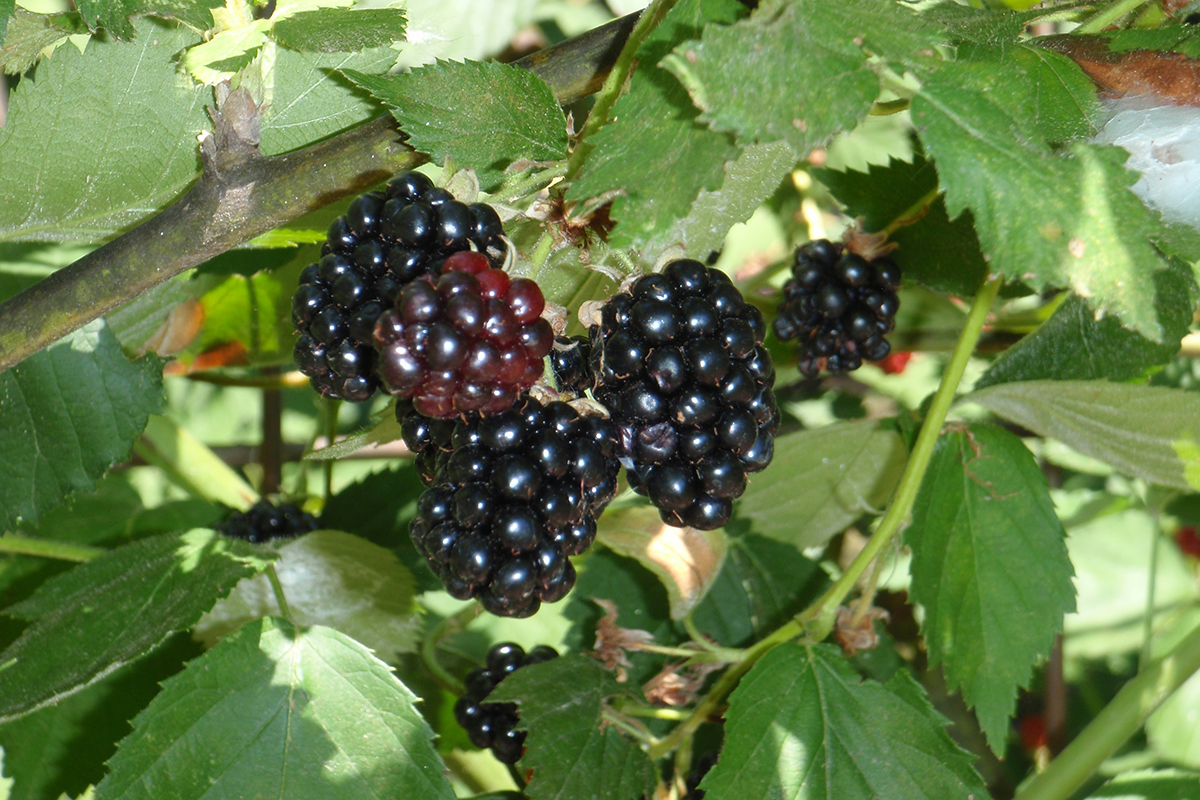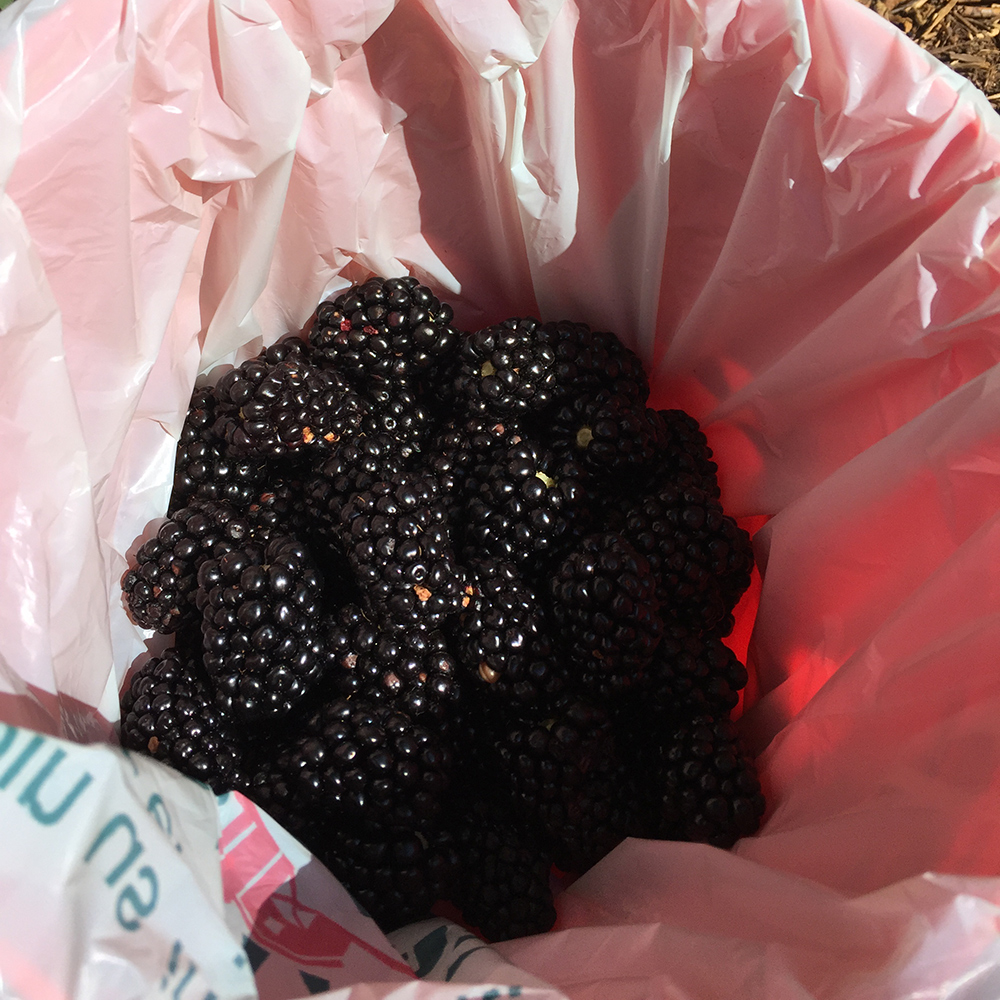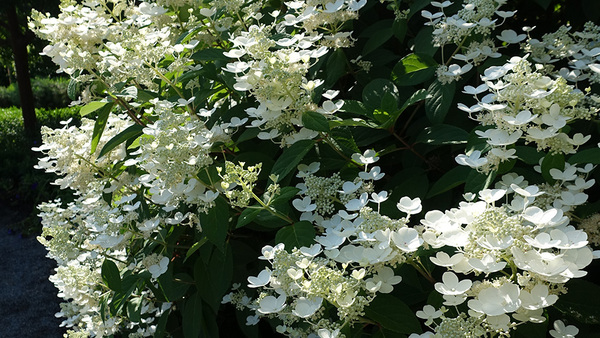
Blackberries are a rewarding crop to grow and one that tolerates the high heat of the Southern Plains. In recent years, improvements in pest resistance and reduced chilling requirements of dormant blackberry plants have expanded areas of production of blackberries in southern gardens. An extensive breeding program at the University of Arkansas has yielded improved blackberry varieties quite adaptable to the home garden. These selections grow on upright, erect stems that do not require trellising, and many cultivars are thornless. They also demonstrate excellent resistance against double blossom/rosette disease, once a serious problem, particularly for commercial production.
While blackberries are heat tolerant, you will need to water plants regularly for quality fruit production. Plants also benefit from a thick mulch layer year-round to conserve soil moisture, manage weeds, and prevent winter injury to crowns in cooler regions.

Considerations for Selecting a Blackberry Variety
While flavor is always a top consideration when selecting blackberry varieties for the garden, there are many other traits to consider.
Thornless varieties
The presence of thorns deters many gardeners from growing blackberries. If you fall into that category, consider one of the many thornless varieties available, such as ‘Ouachita’ (Zones 5–9) or ‘Osage’ (Zones 6–10) blackberries.
Growth habits
Manage a blackberry plant in the landscape based on its growth habit. There are three types of growth habit:
- erect
- semi-erect
- trailing
Varieties that are semi-erect or trailing require a trellis for support. For this reason, erect blackberries have gained in popularity, especially among home gardeners. You can grow erect blackberries in a hedgerow, as they do not require trellising. You can also plant them among ornamental plantings, provided you allow access for harvest.

Chilling hours
Understanding chilling hours is of great importance for southern gardeners. Different blackberry varieties have different chilling requirements. If plants do not receive the required number of chilling hours, they may experience delayed or erratic blooming and reduced fruit production.
Chilling hours are a particularly important consideration for Texas gardeners when selecting blackberries adapted to their region. The term “chilling hours” refers to the minimum period of cold weather a plant requires before it will produce flowers. This chilling or rest period is measured in chilling hours, an accumulation of time below a critical temperature (approximately 45°F).
Southern growers should consult a map of chilling hours or contact their local extension agent to determine the average chilling hours for their location.
Blackberry varieties with low chilling hours
- The blackberry variety with the lowest known chilling requirements is ‘Kiowa’ (200 hours, Zones 5–9), a thorny, erect variety with very large berries that is well suited to Texas gardens.
- ‘Rosborough’ (300 hours, Zones 6–9), an older erect, thorny variety produced by Texas A&M University, is recommended for eastern and south-central Texas.
- For a thornless variety, consider planting ‘Arapaho’ (400–500 hours, Zones 5–9), which produces high-quality, medium-size fruit over a four-week season.

Fruit production
Blackberry stems grow for only two years before they die and are replaced by new stems. The first-year canes are called primocanes, and second-year canes are called floricanes. Traditionally, most blackberries produce fruit only on floricanes.
Floricanes flower in spring and produce a fruit crop from early to mid-summer. Note that chilling hours only affects fruiting on these floricanes, which go through a winter dormancy period. ‘Ouachita’ is one of the most popular floricane-producing varieties on the market and an excellent choice for home gardeners.
An innovation in blackberry breeding introduced primocane-fruiting blackberries, which flower and fruit on first-season canes. The primocanes produce fruits in late summer (timing varies with cultivar), with many varieties fruiting well into fall. Overwinter primocanes to produce a second crop the following year on the second-year floricanes. Not only does this provide growers with an extended harvest season, but it also allows gardeners in locations with variable chilling hours in winter to reliably produce a crop on primocanes.
Blackberry varieties in the Prime-Ark® series (Zones 5–9) are primocane producers. Among the most popular is Prime-Ark® 45. This erect, thorny variety produces large, tasty berries and can be managed to produce a primocane and floricane crop. It has an estimated chilling requirement of 300 hours. For a thornless selection, consider Prime-Ark® Freedom.
Blackberries are long lived and, with proper care, can produce a delicious crop for years to come.
Kim Toscano is a horticulturalist based in Stillwater, Oklahoma. She previously hosted Oklahoma Gardening, a weekly PBS television program produced by the Oklahoma Cooperative Extension Service.
Photos: Kim Toscano


















Comments
Log in or create an account to post a comment.
Sign up Log in